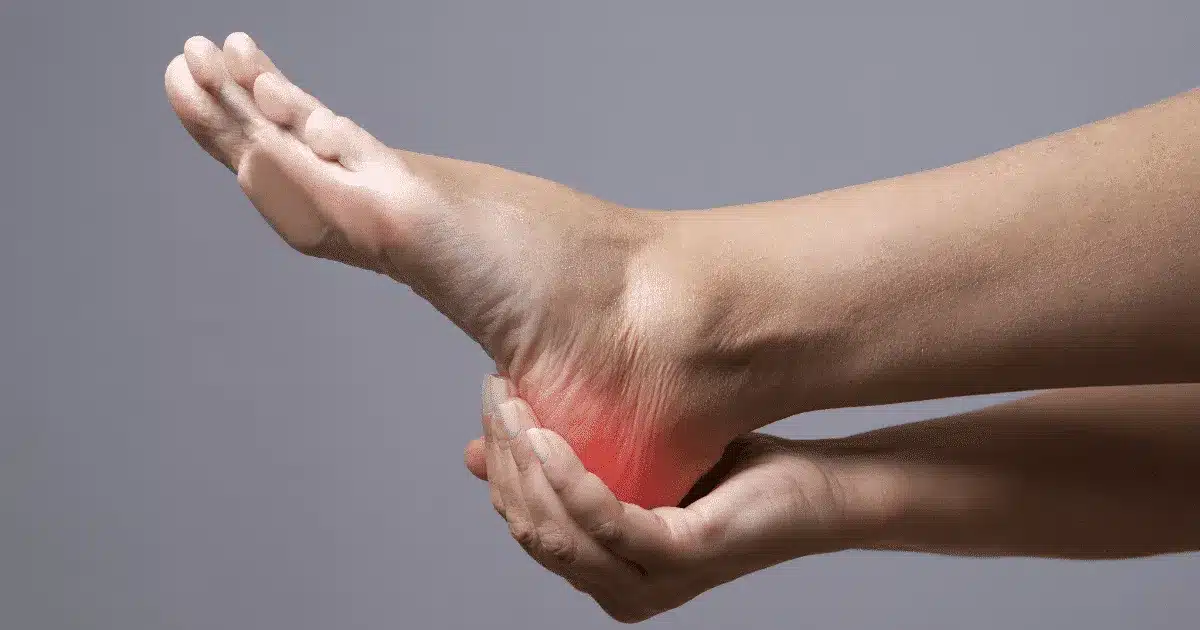Have you ever woken up and stepped out of bed only to wish you hadn’t? It’s not just the impending dread of a Monday morning at work for some of us. Everyday, millions of people begin the day in pain, the culprit being plantar fasciitis.
The cause of this physical impairment is varied. Any number of individual causes or a combination of these can contribute to the condition. Over time, the tissue, or fascia, that helps connect the tissue of muscle and ligaments to the underside of the foot begin to become inflamed or break down altogether. Typically beginning in the heel, and following the band of tissue along the sole of the foot to the toes, the symptoms can begin gradually, and through time, overuse, and other contributing factors can become worse over time and even become a chronic disability.
Some of the causes of Plantar Fasciitis include:
- Long hours standing on your feet
- Ill-fitting or non-supportive footwear
- Types of activity, such as running, standing, walking on hard surfaces
- Women are more susceptible than men
- Obesity
- Genetic factors such as flat feet or degenerative disorders affecting the fascia
What is happening?
Symptoms are typically noted after periods in inactivity, such as first waking up in the morning, or even just being off your feet for a long time. The pain is sharp and stabbing, and until the tissues are warmed up and limber, are very noticeable and even debilitating. Because most of us live lifestyles which demand us to be on our feet, pain such as this is often treated in such a way that mask the symptoms, thus enabling us to function, yet in the process continuing to allow the tissue to become damaged further.
Small tears in the fascia become harder for the body to repair, and continued activity on the feet, exacerbate the damage. In the beginning, the pain might be ignored, treated with painkillers, or left up to speculation as to whether this is just something that “happens when you get older,” but the truth is that plantar fasciitis can happen to anyone, at nearly any age. It is an injury that can be prevented, treated, and controlled. Unfortunately, once the damage has begun, without adequate treatment and some adjustments to your lifestyle, it will continue to get worse.
What can I do?
Visit your physical therapist and get a diagnosis. Chronic pain in the feet may be symptoms of a variety of serious conditions (including diabetes–which can be very serious if left untreated). In order to get the best treatment for you, a diagnosis is the best place to start.
Take a look at what you do in your daily life:
- Have you undergone any lifestyle changes?
- Have you been increasing your activity or changing the kinds of exercise you normally do?
- Have you changed the kinds of shoes you usually wear?
- Have you gained weight?
- Are you pregnant?
- Have you experienced an injury that has caused changes in the way you walk?
- What kinds of surfaces are you walking on and for how many hours per day?
- Are you stretching properly before and after exercise?
- Is there any history of plantar fasciitis in your family?
- When do you feel the pain the most acutely? Does it come and go?
- Be sure to discuss all of these things with a professional, as any information in relation to pain is important.
What can they do to help?
Physical therapy, an anti-inflammatory such as Ibuprofen or Naproxen can be administered, or even footwear which provides better support. Inserts can control the damage done from overuse and give the foot the support that it needs to heal on its own. Types of stretching which directly affect this area in a therapeutic way can also be used, as can splints, changes in the kinds of activity you do on your feet, and even weight loss can be used to maintain and control the condition.
However, ASTYM therapy has been shown in studies to have the most beneficial effect of all treatments ASTYM treatment is the regenerative medicine of therapy and is designed to restore soft tissues at a cellular level. It regenerates healthy soft tissues (muscles, tendons, etc.), and removes unwanted scar tissue. ASTYM therapy is so effective because it was scientifically developed to target the actual cause of the pain rather than just the symptoms.
At home, following your recovery regimen in conjunction with icing the area, proper stretching techniques, better footwear, and simply allowing your body to heal on its own are also what needs to happen to prevent the condition from getting worse.
No one should dread their first steps they take in the morning, at least not from simply getting up and out of bed. Pain is your body’s way of telling you that something is wrong, and ignoring that pain is like ignoring the advice of your dearest and closest friend. In the short-term, you face pain and discomfort, but in the long-term you might be facing a life-changing disability that will become extremely expensive to treat, if it isn’t too late to be treated at all.
Contact us to learn more about plantar fasciitis, ASTYM therapy and what you can do to live a pain-free, happy, and healthy life. With just a few tweaks to your lifestyle and some proactive treatment early on, this is something you can beat early on. Don’t ignore what your body is telling you until it’s too late.
Walk back into your life with confidence. All you need to do is take the first step.



